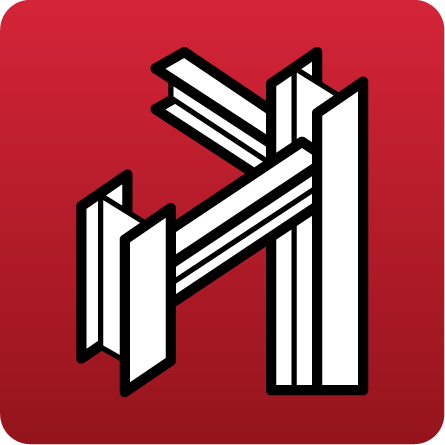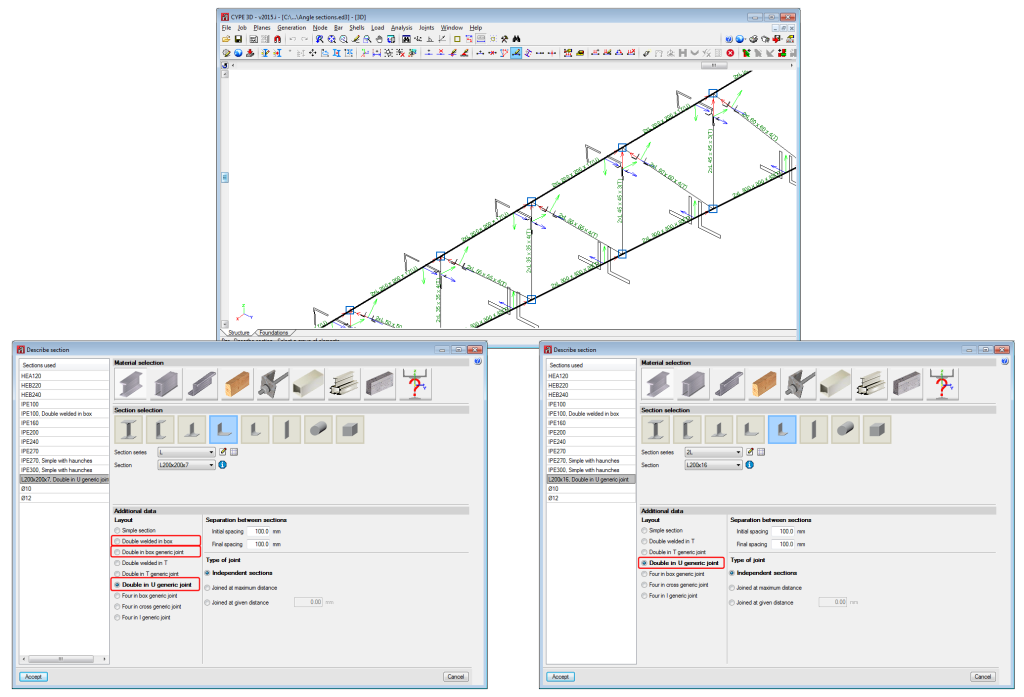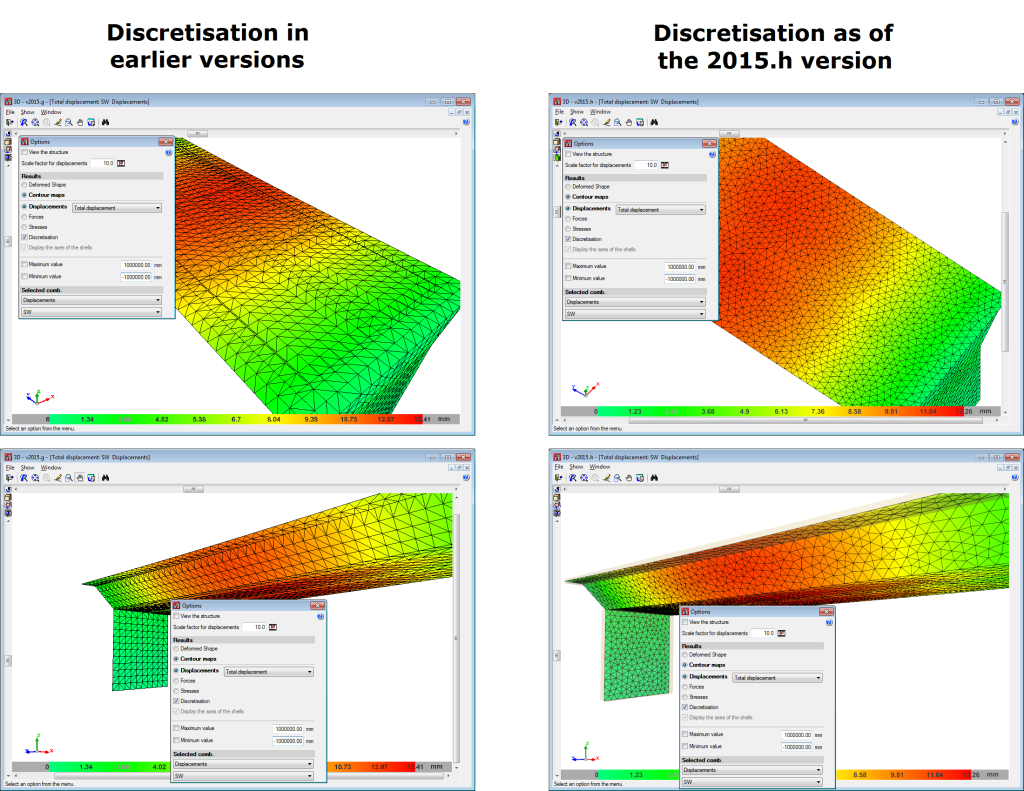Building Code Requirements for Structural Concrete (ACI 318M-11).
Implemented in CYPECAD, CYPE 3D and Continuous beams.
CYPECAD and CYPE 3D use the Advanced beam editor and Advanced column editor when applying this code.

Building Code Requirements for Structural Concrete (ACI 318M-11).
Implemented in CYPECAD, CYPE 3D and Continuous beams.
CYPECAD and CYPE 3D use the Advanced beam editor and Advanced column editor when applying this code.
Using the “Composite steel and concrete columns” module, CYPECAD and CYPE 3D can check composite steel and concrete columns in accordance with the “EN 1994-1-1” and “ANSI/AISC 360-10” codes.
The code to be used for the composite column check is not selected directly as is done with the concrete and steel codes. The program applies a code depending on the selected concrete code.
Below are the implemented types of composite columns:
More information on this new CYPECAD and CYPE 3D module can be found on the Composite steel and concrete columns webpage. ![]()
When the selected steel code is the CTE DB SE-A (Spain), EAE 2011 (Spain) or Eurocodes 3 and 4 (EU or any of Eurocode adaptations to other countries), the program allows users to choose thermomechanical rolled steel and Histar® rolled steel (ArcelorMittal).
Compared to conventional steels, the elastic limit for these steels has been reduced depending on the nominal thickness of the section, and so, it may be useful to use them with large sections.
Depending on the selected code, the steel types users can choose amongst are:
As of the 2015.i version, users can define sections composed of symmetrical or unsymmetrical rolled steel angles:

These two sections were available, as of previous versions, for cold-formed steel angle sections.
CYPE 3D has allowed, since previous versions, for surface loads to be defined on shells. As of the 2015.h version, CYPE 3D allows users to define temperature and retraction increments on the shells. This can be done in the “Introduce loads on shells” dialogue box (Loads > Introduce loads on shells).
Furthermore, now that, as of the 2015.h version, specific loadcases for temperature and retraction can be defined in CYPECAD and CYPE 3D, any temperature and retraction loads applied can be included in their specific loadcases and combined with the other loadcases in accordance with the selected design code.
As of the 2015.h version, the mesh applied to discretise shells has been optimised. A more homogenous discretisation is now generated with an optimum ratio of each element, aimed at minimising any tension gradients between the finite elements of the discretisation.
The program also adapts the mesh to the geometry of the loads that have been defined in the load panels in the same plane as the shell, and so allowing for load panels which will only affect part of the surface of a shell to be defined. Therefore, shells no longer have to be divided for a load to be able to occupy its entire surface.
The load panel does, however, have to be completely covered by shells, even if there are shells in the panel that are not completely covered by it.

These codes were already implemented in an earlier version of CYPECAD and CYPE 3D. Now, in the 2015.h version, users can define the seismic spectrum.
A design spectrum must be defined for the seismic analysis of the structure. Each seismic code provides the criteria to be followed, within a specific territory, when considering seismic action in the project. Nevertheless, the project designer may adopt, under his/her responsibility, different criteria to that established in the code. The program provides users with the tools to be able to contemplate this possibility for the selected codes. The design seismic spectrum can be:
More information on which codes allow users to define a customised design spectrum can be found in the Seismic spectrum specified by users section in the CYPECAD page.ermiten esta posibilidad.
As of the 2015.f version, some types of welded and bolted I-section beam-beam and beam-column connections can be designed and checked in CYPE 3D and in CYPE-Connect when beams reach the web of the other beam, or to the flange or web of columns and are not at a right angle on plan.
The maximum permitted angle will depend on whether the connection can be executed (space available to place bolts) and on design standard limitations (effective weld angle).
Below are the types of connections for which this angle can be used (for both welded and bolted connections):
The connection details drawing includes an on-plan view, the angle of the beams with respect to the plane orthogonal to the surface connecting to the column or beam.
As of the 2015.f version, welded and bolted I-section column-lintel connections designed and checked in CYPE 3D and CYPE-Connect, can have slightly eccentrically aligned webs. Both programs can design these connections whilst the projections of the webs of the column and lintel overlap in a plane perpendicular to that of the webs’.
In the 2015.f version, checking bars is an analysis option, and so, users can analyse the structure with or without checking bars. In previous versions, when the job was analysed, bars were checked and users did not have the option to analyse to simply obtain forces.
As of the 2015.f version, results which depend on bars having been checked will not be available if the option “Check bars” has not been activated. By including this option, the use of the program has been optimised especially in the early design stages of the structure where users do not wish to check sections but rather know how the structure behaves and how the forces are distributed.
As of the 2015.f version, when a panel is copied (Job > Copy elements) , all the surface loads applied on the copied panel are also copied automatically. In previous versions, copying a panel did not imply that its surface loads would also be copied, unless the option to copy the surface loads was activated.